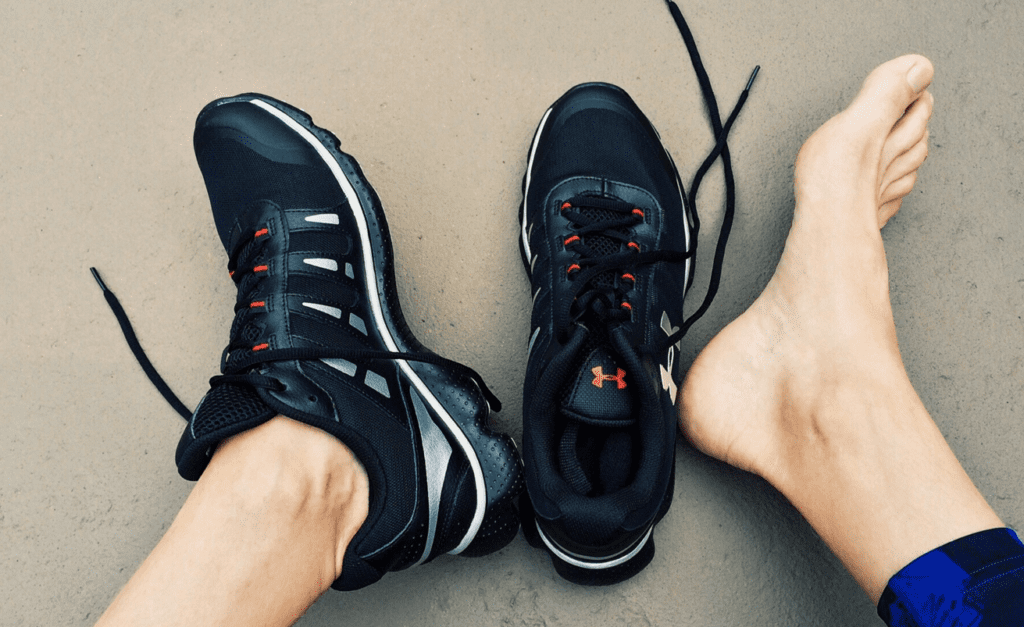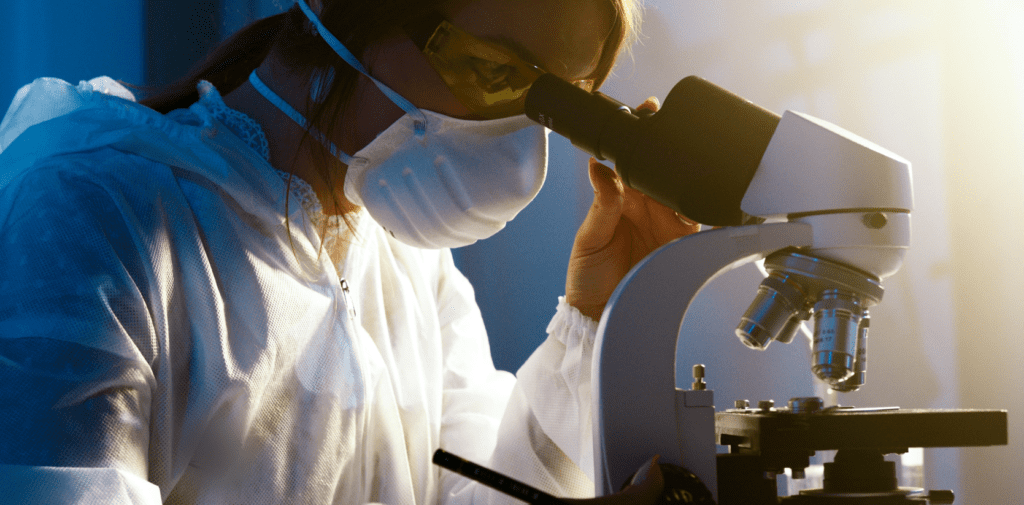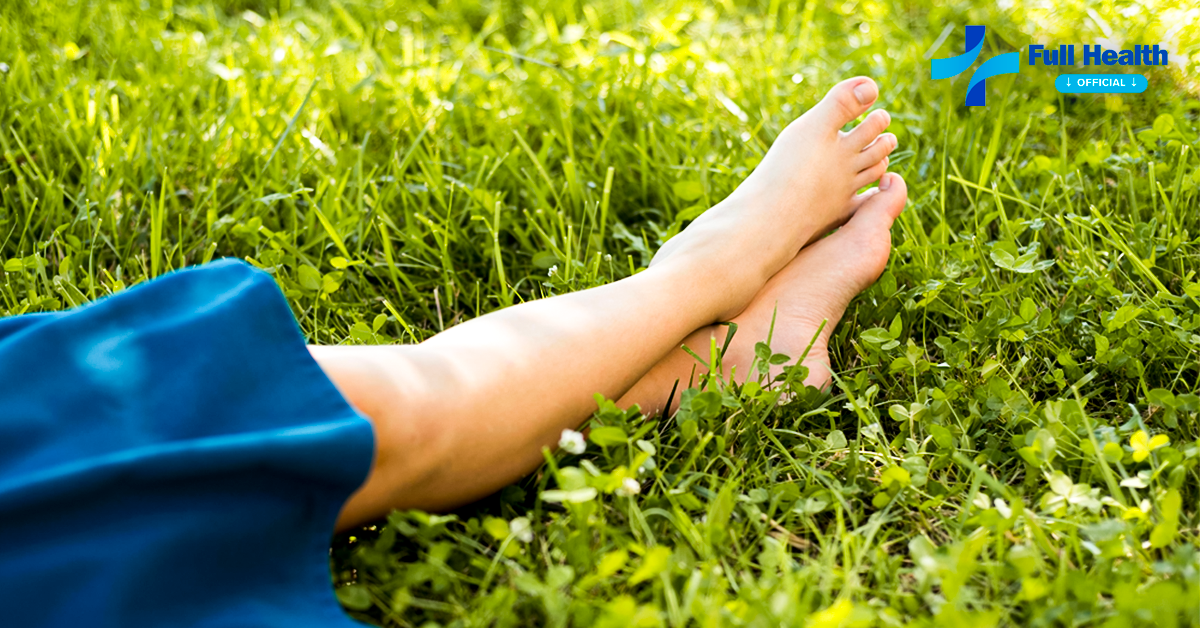Imagine discovering that your nails, something you often don’t pay much attention to, have started to change color, thicken, and suddenly become painful. It may seem like a small problem, but it directly affects your self-esteem and even your health. This is the reality for those dealing with onychomycosis, also known as nail fungus.
More than just an aesthetic issue, nail fungus can cause discomfort and even pain, and it can be stubborn and difficult to treat if not diagnosed early. Understanding this condition, its causes, symptoms, and the best treatment options is essential to keeping your nails healthy and avoiding complications. Let’s explore what onychomycosis is and how you can prevent and treat this infection effectively.

📜Contents
- 1 What is Onychomycosis or Nail Fungus? 📌
- 2 What Causes Nail Fungus (Onychomycosis) ? 🤔
- 3 Symptoms of Onychomycosis 🧪
- 4 Diagnosis of Onychomycosis 👨⚕️
- 5 Treatments for Onychomycosis 🧬
- 6 100% Natural Dietary Supplement 🍃
- 7 Prevention of Onychomycosis 🛡️
- 8 Complications of Onychomycosis ⚠️
- 9 When to See a Doctor ❤️🩹
- 10 Conclusion 💥
- 11 Also Read – More Posts 💡
What is Onychomycosis or Nail Fungus? 📌
Onychomycosis, commonly known as nail fungus, is an infection that affects the nails of the feet and hands. It is caused by fungi that feed on keratin, the protein that makes up the nails. Although it may initially seem like just a cosmetic issue, onychomycosis can progress and cause significant discomfort, affecting both the appearance and health of the nails. Understanding this condition is the first step in knowing how to prevent and treat it correctly.
What Causes Nail Fungus (Onychomycosis) ? 🤔
How Does Nail Fungus Develop?
The fungi that cause onychomycosis thrive in warm, damp environments, such as those found in closed shoes or areas with poor ventilation. When a nail is exposed to these fungi, especially if there are small cuts or cracks in the surrounding skin, the fungus can infiltrate and begin to grow. This growth is slow but steady and may go unnoticed until the nail starts to change in appearance due to nail fungus.
Risk Factors for Onychomycosis
Several conditions can increase the risk of developing onychomycosis. Wearing closed shoes for long periods, frequenting public damp places like pools and gyms, and not properly drying your feet after bathing are some of the factors that create a favorable environment for infection. Additionally, people with weakened immune systems, diabetes, or circulation problems are at higher risk of contracting onychomycosis, as their bodies have more difficulty fighting off infections like nail fungus.

Symptoms of Onychomycosis 🧪
Visible Signs of Nail Fungus (Onychomycosis)
- The early signs of onychomycosis can be subtle, but over time they become more evident. Affected nails may start to show discoloration, ranging from yellowish to dark brown. The texture of the nail also changes, becoming thicker, more brittle, and in severe cases, the nail may begin to disintegrate. These symptoms not only affect appearance but can also cause discomfort.
Discomfort and Pain
- As nail fungus progresses, the nail may begin to detach from the nail bed, which can be quite painful. This discomfort is more intense when wearing tight shoes that press against the infected nail. Additionally, nail fungus can cause inflammation and redness in the skin around the nail, further increasing discomfort. The pain can be persistent and, in extreme cases, interfere with mobility.

Diagnosis of Onychomycosis 👨⚕️
How Is the Diagnosis Made?
The diagnosis of onychomycosis usually begins with a visual assessment of the nails. However, to confirm the presence of nail fungus, specific tests, such as a nail scraping for laboratory analysis, may be necessary. This test identifies the specific type of nail fungus, which is crucial in determining the most effective treatment. Early diagnosis is essential to prevent complications and ensure the treatment has the best chance of success.
Importance of Early Diagnosis
Detecting onychomycosis in its early stages can make all the difference in treatment. When treated early, the chances of completely eliminating the infection are higher, and the recovery time is shorter. Additionally, early diagnosis can prevent the spread of the fungus to other nails and prevent the infection from becoming resistant to conventional treatments.

Treatments for Onychomycosis 🧬
Topical and Oral Treatments
- The treatment of onychomycosis can be done with topical medications, such as antifungal nail polishes, which are applied directly to the nail. These treatments are generally more effective in mild cases and should be used consistently for several months. However, for more severe infections, doctors may prescribe oral antifungal medications, which treat nail fungus from the inside out. These medications are generally more potent but can also have side effects, such as liver damage, requiring regular medical monitoring.
Natural and Home Treatments
- In addition to conventional treatments, some people opt for natural remedies to treat nail fungus (onychomycosis). Essential oils such as tea tree oil and oregano oil have antifungal properties and can be applied to the nails of the feet and hands. Another popular home remedy is apple cider vinegar, which, due to its acidity, can create a hostile environment for fungi. While these treatments can help in mild cases, they are rarely sufficient to completely cure the infection and should be used with caution.
Laser Treatment
- Laser treatment for nail fungus (onychomycosis) is a relatively new option and is used to destroy fungi without damaging the surrounding tissue. The laser penetrates the nail and directly targets the fungus, with minimal risk of side effects. However, this treatment can be expensive, and in some cases, more than one session may be required to achieve satisfactory results. The effectiveness of laser treatment varies from person to person, as with any other method, and it is generally considered an option when other treatments have failed.

100% Natural Dietary Supplement 🍃
In a world where we are increasingly aware of the importance of taking care of our health in natural ways, using supplements made from natural ingredients has emerged as an excellent option to complement traditional treatments. Products like Kerassentials, for example, show how powerful nature can be in combating common problems like nail fungus.
Kerassentials is more than just a supplement; it’s a complete and potent formula, made up of special oils and vitamins that work in harmony to support the skin and nails. When applied daily after a bath, these carefully selected ingredients help fight fungi, keeping nails and skin healthy and protected. Additionally, these oils and vitamins give the nail bed the boost it needs to constantly rebuild, ensuring long-lasting, natural protection.
Choosing natural supplements like Kerassentials not only supports your nail health in various ways but also respects your body’s balance, promoting overall well-being.
>> Learn More About Kerassentials <<
Prevention of Onychomycosis 🛡️
Tips to Prevent Nail Fungus (Onychomycosis)
- Preventing onychomycosis involves adopting habits that keep feet clean and dry. Wearing cotton socks that absorb moisture and regularly changing footwear can help keep feet safer. Avoid walking barefoot in public places and dry your feet well after bathing are also essential practices. Another important tip is to wear shoes that allow ventilation, preventing feet from being trapped for long periods.
Daily Nail Care
- Keeping toenails and fingernails trimmed and clean is key to preventing unwanted visitors like onychomycosis. Using sterilized nail scissors or clippers prevents the introduction of fungi and bacteria. Avoid sharing manicure and pedicure tools with others, as this can be a means of transmitting fungi. Additionally, regularly moisturizing nails and cuticles keeps them healthy and resistant to infections.

Complications of Onychomycosis ⚠️
Risks of Not Treating Nail Fungus (Onychomycosis)
Ignoring onychomycosis or delaying treatment can lead to serious complications. Nail fungus can spread to other nails and even the surrounding skin, causing secondary infections. In extreme cases, onychomycosis can cause chronic pain and lead to permanent nail loss. For people with pre-existing conditions, such as diabetes, the risk of serious complications is even greater, potentially leading to ulcers and deeper infections.
Impact on Quality of Life
In addition to physical problems, onychomycosis can have a significant psychological impact. The altered appearance of nails can cause embarrassment, affecting self-esteem and confidence. Many people with onychomycosis avoid wearing sandals or going to the beach, which can limit their social and leisure activities. Treating the infection not only improves nail health but can also restore confidence and improve quality of life.

When to See a Doctor ❤️🩹
Signs That You Should Seek Medical Help
If you notice that your symptoms are worsening or that the infection is not responding to home treatments, it’s time to see a doctor. Signs such as persistent pain, intense redness, or the appearance of pus indicate that the infection may be spreading or that complications are arising. A doctor can assess the severity of the infection and suggest appropriate treatment, ensuring you receive the necessary care for nail fungus.
Professional Treatment Options
When onychomycosis reaches an advanced stage, prescribed treatments from a doctor may be necessary. In addition to oral and topical medications, a dermatologist or podiatrist may suggest partial or total removal of the affected nail in extreme cases. In specialized clinics, more advanced treatments such as laser therapy, as described above, can be a very effective solution.

Conclusion 💥
Caring for your nails goes far beyond aesthetics; it’s a matter of health and well-being. Onychomycosis, or nail fungus, may seem harmless at first, but if left untreated, it can cause discomfort and even compromise your quality of life. That’s why prevention and early diagnosis are key.
Remember, don’t ignore the signs your body gives. If you notice anything different about your nails, seek medical help as soon as possible. With the right care, it is possible to keep your nails healthy and prevent nail fungus (onychomycosis) from becoming a bigger problem. Your nails deserve attention, and you deserve to feel good about yourself.
Also Read – More Posts 💡






[…] Onychomycosis: What it is, Causes, Symptoms and Treatments […]
http://wish-club.ru/forums/index.php?autocom=gallery&req=si&img=5230
http://terios2.ru/forums/index.php?autocom=gallery&req=si&img=4815
http://terios2.ru/forums/index.php?autocom=gallery&req=si&img=4726
https://honda-fit.ru/forums/index.php?autocom=gallery&req=si&img=7209
https://honda-fit.ru/forums/index.php?autocom=gallery&req=si&img=7215
https://hrv-club.ru/forums/index.php?autocom=gallery&req=si&img=7058
http://toyota-porte.ru/forums/index.php?autocom=gallery&req=si&img=3263
https://mazda-demio.ru/forums/index.php?autocom=gallery&req=si&img=6397
https://honda-fit.ru/forums/index.php?autocom=gallery&req=si&img=7086
https://mazda-demio.ru/forums/index.php?autocom=gallery&req=si&img=6399
https://mazda-demio.ru/forums/index.php?autocom=gallery&req=si&img=6344
http://passo.su/forums/index.php?autocom=gallery&req=si&img=4258
https://mazda-demio.ru/forums/index.php?autocom=gallery&req=si&img=6530
https://hrv-club.ru/forums/index.php?autocom=gallery&req=si&img=7070
https://hrv-club.ru/forums/index.php?autocom=gallery&req=si&img=7103
https://vitz.ru/forums/index.php?autocom=gallery&req=si&img=4930
https://hrv-club.ru/forums/index.php?autocom=gallery&req=si&img=7028
https://mazda-demio.ru/forums/index.php?autocom=gallery&req=si&img=6551
https://honda-fit.ru/forums/index.php?autocom=gallery&req=si&img=7240